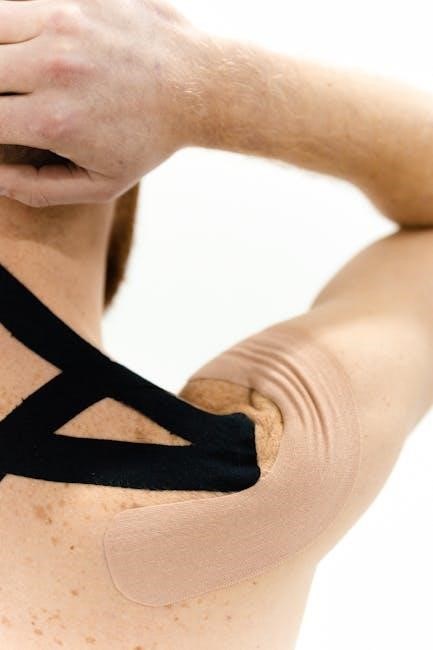A structured rehabilitation protocol is essential for shoulder dislocation recovery․ It maximizes function, reduces recurrence, and restores strength․ Key elements include exercises, physical therapy, and gradual progression․
1․1 Understanding the Importance of Rehabilitation
Rehabilitation is crucial for restoring shoulder function after dislocation․ It prevents recurrence, strengthens muscles, and improves joint stability․ Early immobilization is followed by controlled exercises to promote healing․ A structured program ensures gradual progression, minimizing complications․ Proper rehabilitation reduces the risk of chronic instability and enhances quality of life; Adherence to a rehabilitation protocol is essential for optimal recovery and return to normal activities․
1․2 Overview of the Rehabilitation Process
The rehabilitation process for shoulder dislocation is structured to restore function, strength, and stability․ It begins with immobilization to allow healing, followed by physical therapy․ Exercises focus on improving range of motion, strengthening muscles, and enhancing proprioception․ The process is divided into phases, from acute care to gradual return to activity․ A multidisciplinary approach ensures personalized care, optimizing recovery and reducing recurrence risk․ Consistency and adherence to the protocol are key for achieving long-term shoulder health and functionality․
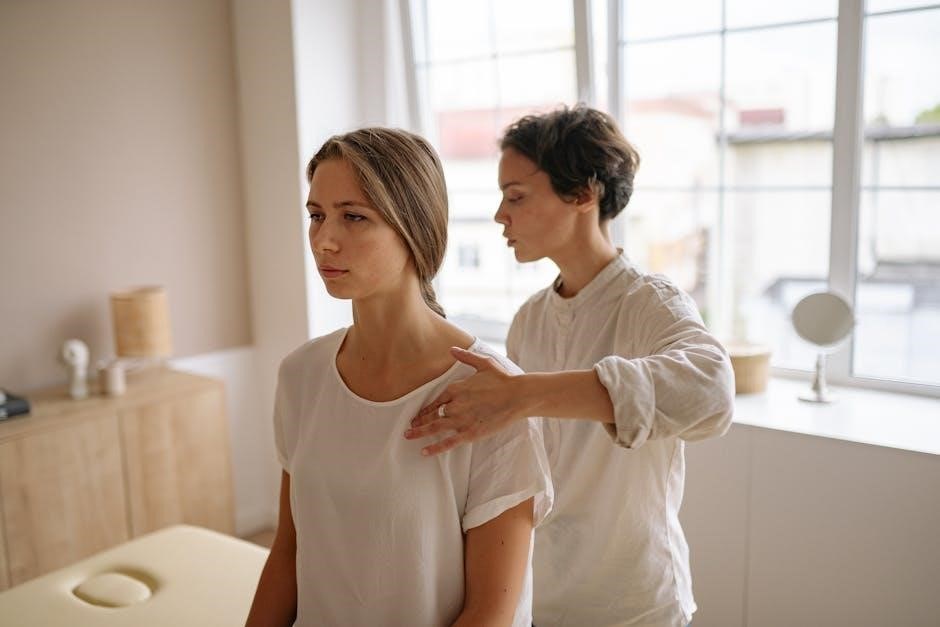
Causes and Types of Shoulder Dislocation
Shoulder dislocation occurs due to traumatic or atraumatic events, resulting in anterior or posterior displacement of the humerus from the glenoid cavity, affecting joint stability․
2․1 Traumatic vs․ Atraumatic Dislocations
Traumatic dislocations result from high-energy injuries like falls or sports accidents, forcing the shoulder out of position․ Atraumatic dislocations occur without significant trauma, often due to muscle imbalances or repetitive strain․ Both types require tailored rehabilitation approaches to address the underlying cause and restore joint stability․ Understanding the distinction is crucial for effective treatment and preventing future episodes․
2․2 Anterior vs․ Posterior Dislocations
Anterior dislocations occur when the humerus is forced out of the glenoid cavity forward, often due to traumatic events like falls or sports injuries․ Posterior dislocations involve the humerus moving backward, frequently caused by seizures or electric shocks․ Anterior dislocations are more common, while posterior ones are rare but can be complex․ Both types require distinct rehabilitation approaches, focusing on restoring joint stability and addressing specific muscle imbalances․ Understanding their differences is key to effective treatment and preventing recurrence․
Immediate Care and Diagnosis
Immediate care involves immobilization, pain management, and diagnostic imaging․ A sling supports the shoulder, while X-rays confirm dislocation․ Prompt evaluation ensures proper treatment and prevents complications․
3․1 Initial Management of a Dislocated Shoulder
Initial management focuses on pain relief and immobilization․ A sling is used to stabilize the shoulder, reducing movement and discomfort․ Ice packs can help minimize swelling and ease pain․ Painkillers, such as NSAIDs, may be prescribed to manage discomfort․ It’s crucial to avoid moving the affected arm to prevent further injury․ Immediate medical attention is essential to ensure proper realignment and prevent complications like nerve damage or recurring instability․
3․2 Diagnostic Imaging and Evaluation
Diagnostic imaging is crucial for assessing shoulder dislocation severity․ X-rays are typically used to confirm the dislocation and identify any fractures․ MRI scans may be recommended to evaluate soft tissue damage, such as labral tears or ligament injuries․ A thorough physical examination, including tests for stability and range of motion, helps determine the extent of joint instability․ Accurate diagnosis guides the appropriate treatment plan, whether surgical or non-surgical, ensuring effective rehabilitation outcomes․

Non-Operative vs․ Operative Rehabilitation Approaches
Shoulder dislocation rehabilitation can be non-operative or operative․ Non-operative focuses on physical therapy and immobilization for first-time dislocators․ Operative is reserved for recurrent instability or severe structural damage․
4․1 When Non-Operative Rehabilitation is Appropriate
Non-operative rehabilitation is ideal for first-time shoulder dislocations, especially in patients without significant structural damage․ It involves immobilization for 4-6 weeks, followed by physical therapy to restore strength and stability․ This approach minimizes complications and promotes natural healing, making it a preferred option for younger, less active individuals or those with mild instability․ It focuses on exercises to enhance shoulder girdle strength and joint proprioception, reducing the risk of recurrence effectively․
4․2 Indications for Surgical Intervention
Surgical intervention is typically recommended for recurrent shoulder instability, significant structural damage, or when non-operative rehabilitation fails․ Indications include Bankart lesions, Hill-Sachs fractures, or labral tears․ Surgery is also considered for young, active individuals with high demands or those with a history of multiple dislocations․ The goal is to restore joint anatomy, enhance stability, and prevent further dislocations, ensuring a quicker return to normal activities and reducing long-term complications effectively․

Phases of Shoulder Dislocation Rehabilitation
The rehabilitation process is divided into three phases: acute (0-4 weeks), subacute (4-12 weeks), and strengthening (3-6 months)․ Each phase focuses on immobilization, pain management, improving mobility, restoring strength, and safely returning to activities․
5․1 Acute Phase (0-4 Weeks)
The acute phase focuses on pain management and immobilization․ Patients often wear a sling to protect the shoulder․ Gentle exercises like pendulum swings and passive range-of-motion movements are introduced to prevent stiffness․ Painkillers and ice are commonly recommended․ Follow-up appointments with a clinician are crucial to monitor healing progress․ Early physical therapy may start after immobilization, depending on the physician’s guidelines․ Proper adherence ensures a solid foundation for recovery and minimizes complications․
5․2 Subacute Phase (4-12 Weeks)
The subacute phase introduces controlled active movements and strengthening exercises․ Patients progress to active range-of-motion exercises and light resistance using elastic bands․ Scapular stabilization and isotonic exercises are emphasized to restore muscle balance․ Pain management continues, with a focus on improving joint stability․ Clinical evaluation ensures safe progression․ This phase aims to enhance strength, flexibility, and proprioception, preparing the shoulder for more dynamic activities while minimizing the risk of re-injury․ Gradual loading and adherence to the protocol are critical during this period․
5․3 Strengthening and Return to Activity Phase (3-6 Months)
This phase focuses on advanced strengthening, dynamic stability, and functional exercises․ Patients engage in resistance training, plyometrics, and sport-specific drills to restore full shoulder function․ Proprioceptive exercises enhance joint awareness, crucial for preventing recurrence․ Gradual return to activities is guided by clinical assessments and functional milestones․ The goal is to achieve pre-injury strength and mobility, enabling safe participation in sports or daily activities․ A personalized approach ensures optimal recovery and minimizes the risk of future dislocations․
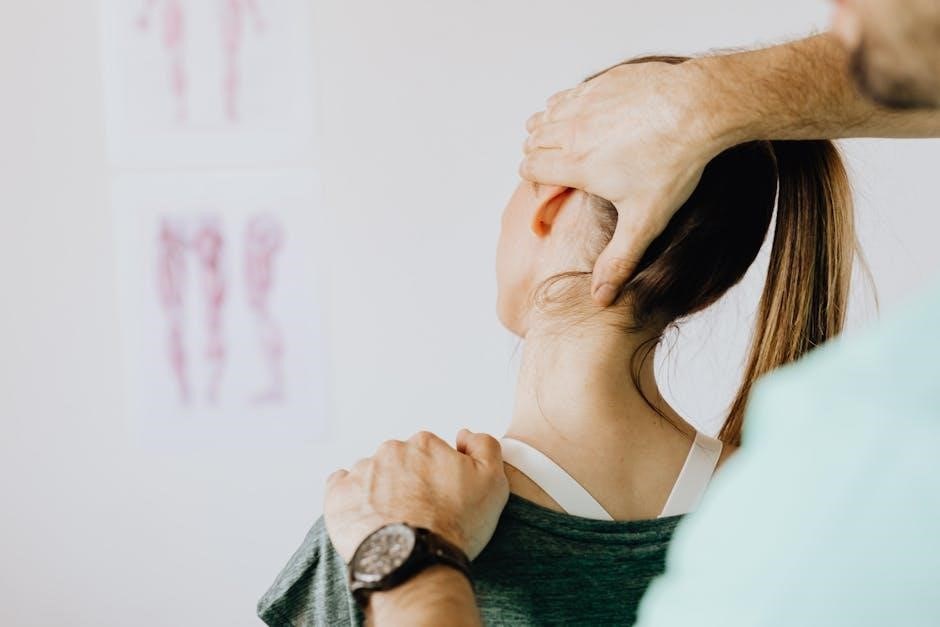
Key Exercises for Shoulder Rehabilitation
Exercises focus on improving range of motion, strength, and stability․ Isotonic exercises, rotator cuff strengthening, and plyometric drills are essential for restoring shoulder function and preventing recurrence․
6․1 Range of Motion Exercises
Range of motion exercises are crucial for restoring shoulder mobility after dislocation․ Gentle movements like pendulum swings, wall slides, and passive stretching help improve flexibility․ These exercises should be performed pain-free, focusing on gradual progression․ Pendulum exercises involve bending at the waist, letting the arm swing freely․ Wall slides strengthen the shoulder while minimizing strain․ Passive stretching, often assisted by a therapist, enhances joint mobility without active muscle engagement․ Consistency is key to prevent stiffness and promote full recovery․
6․2 Strengthening Exercises for Scapular Stabilizers
Strengthening the scapular stabilizers is vital for shoulder stability and preventing future dislocations․ Exercises like scapular push-ups, bird dogs, and seated row variations target muscles such as the trapezius, rhomboids, and serratus anterior․ These exercises improve posture, reduce scapular winging, and enhance overall shoulder function․ Resistance bands or light dumbbells can be incorporated to increase intensity․ Consistent practice ensures proper muscle activation and supports long-term shoulder health, reducing the risk of recurrent instability and improving athletic performance․ Proper form and gradual progression are essential to avoid overstrain․
6․3 Dynamic Stability and Proprioception Exercises
Dynamic stability and proprioception exercises are crucial for restoring shoulder function after dislocation․ These exercises focus on improving joint awareness and control during movement․ Techniques like balance drills on unstable surfaces, resistance band exercises, and controlled arm movements help enhance neuromuscular coordination․ Proprioceptive exercises, such as joint repositioning and perturbation training, strengthen the shoulder’s ability to maintain stability in various positions․ These activities mimic real-life movements, reducing the risk of recurrent instability and improving overall shoulder performance in daily activities and sports․ Consistency in these exercises ensures lasting benefits and prevents future dislocations․

Considerations for Post-Surgical Rehabilitation
Post-surgical rehabilitation requires a structured program to ensure proper healing and restore function․ Immobilization, pain management, and gradual mobilization are critical․ Supervised therapy sessions guide recovery effectively․
7․1 Immobilization and Protection
Immobilization is critical after shoulder surgery to protect the repair and promote healing․ A sling or brace is typically used for 4-6 weeks․ This period allows tissues to stabilize and reduces the risk of recurrent dislocation․ Protection involves avoiding heavy lifting, overhead activities, and any movements that stress the shoulder joint․ Pain management and adherence to immobilization guidelines are essential to ensure proper recovery․ Gradual mobilization follows this phase to restore range of motion and strength safely․
7․2 Gradual Progression of Movement and Load
After immobilization, movement and load are reintroduced gradually to avoid stressing the healing tissues․ Early stages focus on passive range of motion exercises, progressing to active movements as strength improves․ Load is added incrementally, starting with light resistance and increasing as tolerated․ This phased approach ensures the shoulder regains stability and strength without risking re-injury․ Close monitoring by a physical therapist is crucial to tailor exercises and progress safely, promoting a full return to function and reducing long-term complications․

Common Complications and How to Address Them
Complications like recurrent instability or frozen shoulder require targeted interventions․ Rehabilitation strategies include specialized exercises, joint mobilizations, and, if necessary, medical interventions to restore function and stability․
8․1 Recurrent Instability and Prevention Strategies
Recurrent instability after shoulder dislocation can hinder recovery․ Prevention strategies include strengthening exercises targeting the rotator cuff and scapular stabilizers, improving joint proprioception, and adhering to a structured rehabilitation program․ Early identification of instability signs, such as subluxations or apprehension, is crucial․ Incorporating dynamic stability exercises and avoiding risky movements can significantly reduce recurrence rates․ A supervised physical therapy regimen ensures proper progression and minimizes the risk of further complications․
8․2 Management of Frozen Shoulder
Frozen shoulder, or adhesive capsulitis, often complicates shoulder dislocation recovery․ Management involves gentle mobilization techniques, pain-free exercises, and anti-inflammatory modalities․ Early intervention with controlled stretching and strengthening exercises can restore joint mobility․ Supervised physical therapy sessions are crucial to prevent prolonged stiffness․ Patient education on proper home exercises and activity modification is essential to avoid aggravation․ Progression should be gradual, focusing on regaining range of motion without exacerbating pain or inflammation․

Role of Physical Therapy in Rehabilitation
Physical therapy guides recovery through tailored exercises, improving mobility, strength, and stability․ It addresses specific deficits, enhances function, and promotes a safe return to daily activities․
9․1 Supervised Therapy Sessions
Supervised therapy sessions are crucial for effective rehabilitation․ A physical therapist tailors exercises to improve mobility, strength, and stability․ They monitor progress, adjust treatments, and ensure proper form to prevent re-injury․ These sessions focus on addressing specific deficits, enhancing joint proprioception, and restoring functional movement patterns․ Regular attendance promotes faster recovery, reduces complications, and helps patients safely return to daily activities and sports․ The structured approach minimizes risks and maximizes outcomes, ensuring a comprehensive recovery process․
9․2 Home Exercise Programs
Home exercise programs complement supervised therapy by enabling consistent practice․ Patients perform daily exercises tailored to their recovery stage, focusing on range of motion, strengthening, and stability․ These routines are designed to be safe and effective, with clear instructions and progression plans․ Adherence to home exercises accelerates healing, enhances muscle strength, and improves joint function, ensuring a smoother transition to normal activities․ Regular communication with therapists adjusts the program as needed, promoting optimal recovery outcomes and long-term shoulder health․
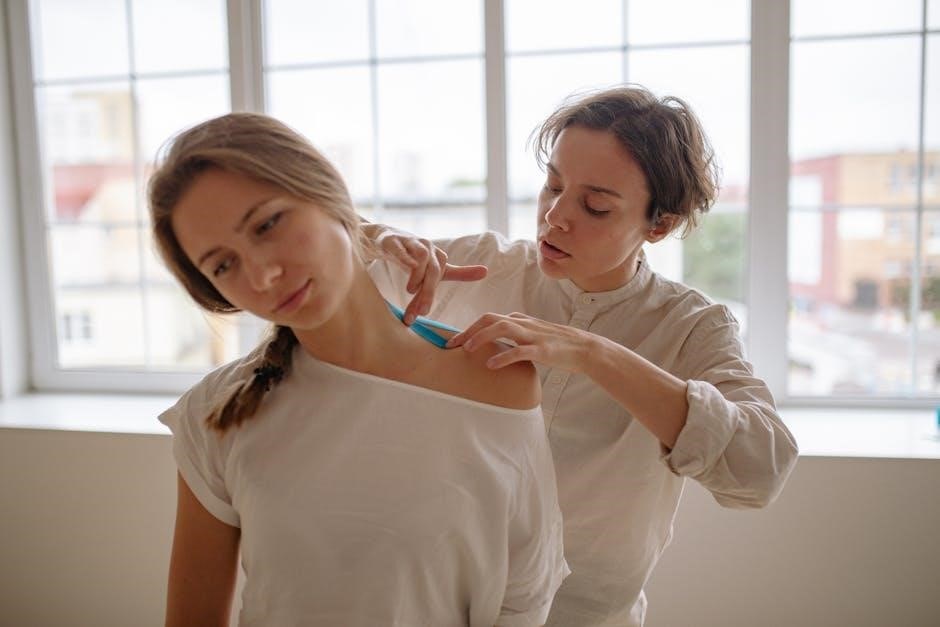
Returning to Sports and High-Level Activities
Athletes can safely return to sports when strength, stability, and range of motion are restored․ Sport-specific drills are tailored to enhance performance and prevent re-injury․
10․1 Criteria for Safe Return to Play
Athletes can return to sports when they achieve full range of motion, strength equal to the uninjured shoulder, and demonstrate stable joint function․ Pain should be minimal, and functional testing must confirm readiness․ A gradual reintroduction to sport-specific movements ensures safety․ Clearance from a healthcare provider is often required․ Proper proprioception and dynamic stability are also critical to prevent re-injury and ensure optimal performance․
10․2 Sport-Specific Rehabilitation Drills
Sport-specific drills mimic the demands of an athlete’s sport, enhancing functional recovery; Examples include overhead throws for baseball, lateral movements for tennis, and collision drills for football․ These exercises improve dynamic stability and proprioception․ Progression is gradual, starting with controlled motions and advancing to high-speed, reactive tasks․ Supervision by a physical therapist ensures proper technique and safety, reducing the risk of re-injury while preparing the athlete for competitive demands․
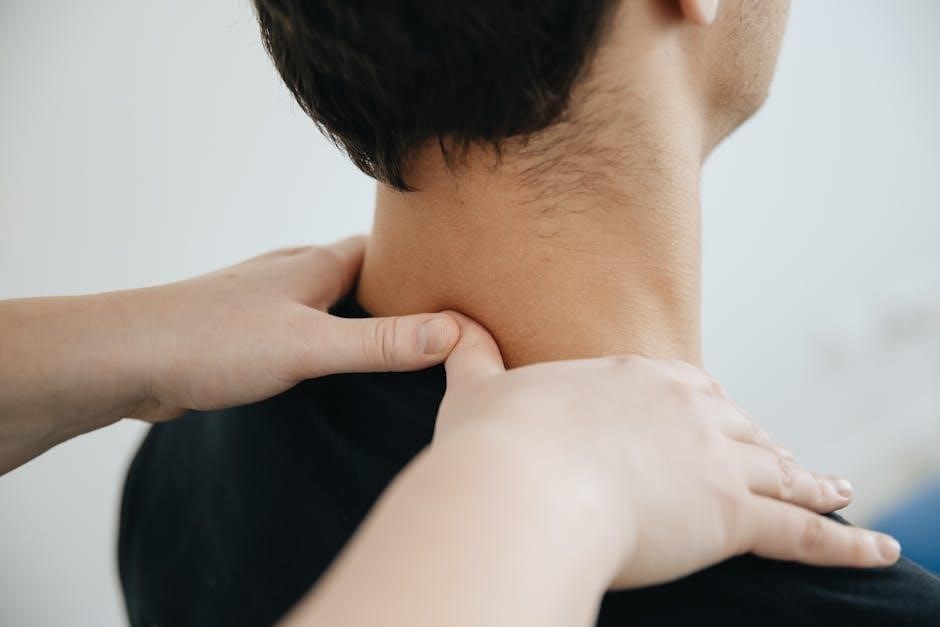
Preventing Future Dislocations
Preventing future shoulder dislocations involves targeted exercises, proper technique, and strengthening the shoulder girdle․ Regular physical therapy and elastic band exercises help improve stability and reduce recurrence risk․
11․1 Strengthening the Shoulder Girdle
Strengthening the shoulder girdle is crucial for preventing future dislocations․ Exercises like shoulder blade squeezes, scapular push-ups, and elastic band resistance target the scapular stabilizers․ These exercises improve joint stability and reduce the risk of recurrence․ Consistency and proper form are essential to build strength and endurance․ Strengthening programs should be tailored to individual needs and progressed gradually to ensure long-term shoulder health and function․
11․2 Improving Joint Proprioception
Enhancing joint proprioception is vital for restoring shoulder stability․ Proprioceptive exercises, such as balance drills and joint repositioning, help the brain better sense the shoulder’s position․ Techniques like closed-chain exercises and wobble board training improve neuromuscular control․ These exercises reduce the risk of recurrent instability by enhancing the body’s ability to detect and correct joint movements․ Regular practice ensures better coordination and long-term shoulder stability, aiding in the prevention of future dislocations;
A well-structured rehabilitation protocol ensures optimal recovery․ Balancing rest, exercises, and gradual loading enhances shoulder function and reduces recurrence risk, leading to successful long-term outcomes․
12․1 Summary of the Rehabilitation Protocol
The shoulder dislocation rehabilitation protocol is a structured plan focusing on immobilization, physical therapy, and gradual exercises․ Initial phases emphasize pain management and basic movements, progressing to strength training and sports-specific drills․ The protocol integrates supervised therapy sessions with home exercises, ensuring a comprehensive recovery․ Adherence to this plan minimizes recurrence risks and restores functional mobility, enabling patients to return to daily activities or athletic pursuits safely and effectively․
12․2 Long-Term Outcomes and Prognosis
With adherence to the rehabilitation protocol, most patients achieve significant improvement in shoulder function and stability․ Long-term outcomes often include restored strength, reduced recurrence rates, and return to pre-injury activities․ Proper rehabilitation minimizes chronic instability and improves quality of life․ Patients who follow guidelines and maintain consistent therapy typically experience favorable prognosis, though individual results may vary based on injury severity and compliance with the program․
